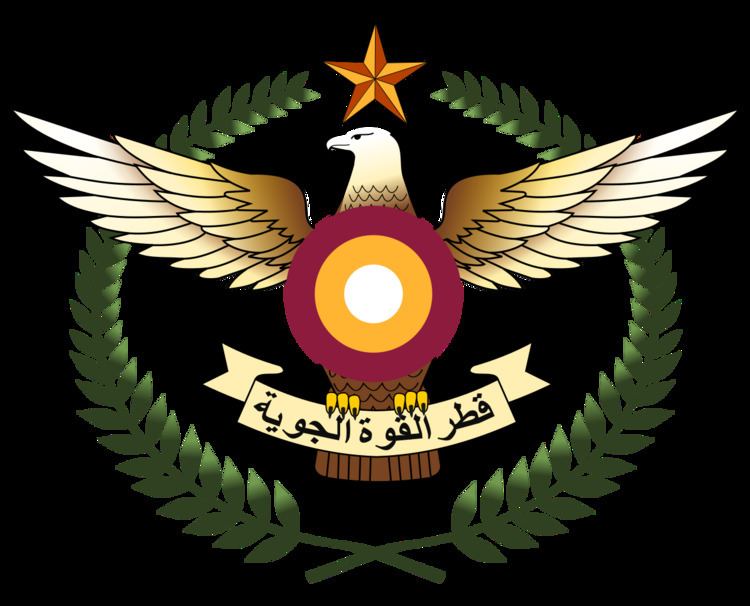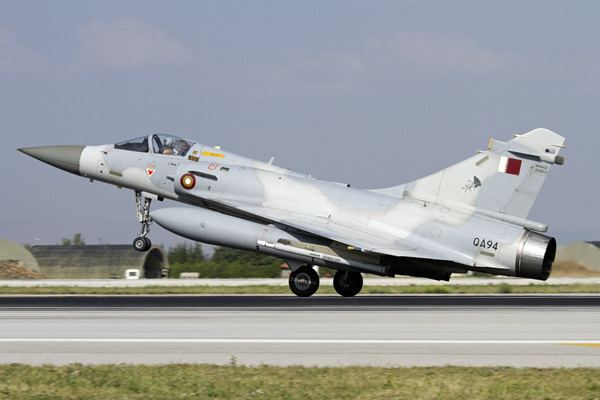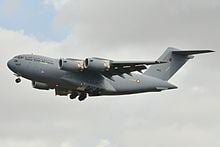Founded 1974-present Fighter Mirage 2000 | Country Qatar | |
 | ||
Current
commander Brigadier General Mubarak Mohammed Al Kumait Al Khayarin Helicopter Aérospatiale Gazelle, Westland Sea King, AgustaWestland AW139 Engagements Saudi Arabian-led intervention in Yemen, Libyan Civil War Trainers Dassault/Dornier Alpha Jet, Piper PA-34 Seneca Transports Boeing C-17 Globemaster III, Boeing 707, Boeing 727, Dassault Falcon 900 Similar Kuwait Air Force, United Arab Emirates, Royal Bahraini Air Force, Lebanese Air Force, Royal Air Force of Oman | ||
The Qatar Emiri Air Force is the air arm of the armed forces of the Persian Gulf state of Qatar.
Contents

Qatar air force mirage 2000 5 fighter jets on air
History

In March 1968, in response to the British announcement that it would withdraw its armed forces from the Persian Gulf, Qatar set up armed forces, creating the Qatar Public Security Forces Air Wing, equipped with two Westland Whirlwind helicopters. In 1971, it acquired a combat capability when it purchased three ex-RAF Hawker Hunter jet fighters, which remained in use until 1981. It was renamed the Qatar Emiri Air Force in 1974.

The air force began a major expansion in 1979, when it ordered six Alpha Jet trainer/light attack aircraft. This was followed by orders for 14 Mirage F1 supersonic jet fighters in 1980, which were delivered between 1980-84. Twelve Gazelle helicopters, armed with HOT anti-tank missiles were received from 1983. Also in 1983, the air force took over the Qatar Police Air Wing.
In 1991, the Qatari Air Force contributed aircraft to conduct strikes against Iraqi forces during the Gulf War. After the conflict the government sought to fortify their air defense with the construction of a new base southwest of the Doha at Al Udaid. The facility has hardened aircraft shelters, air defence radars and Roland missile batteries. In the 1990s, they acquired more Alpha Jets with a ground attack capability and a squadron of Mirage F1s, from France.
In 2005, the Air Force participated in Exercise Eagle Resolve, along with Medical Services and Emergency Medical teams to build Interoperability with their US counterparts. The U.S. 26th Marine Expeditionary Unit took part in exercise to validate the nation’s crisis management plan prior to hosting the Asian Games in 2006.
Other acquisitions have been for an order of 18 AW139 helicopters. The helicopters are used for utility tasks, troop transport, search and rescue, border patrol, special forces operations, and law enforcement. Three additional aircraft were ordered in March 2011 for Medivac services. By 2010, the Qatar Emiri Air Force's personnel strength was at 2100 and among its fleet of equipment was the Mirage 2000-3EDA, the SA 342L Gazelle, as well as the C-17A Globemaster III. Aircraft either fly out of al-Udeid field or Doha International Airport and receive training from British instructors. In January 2011, the Air Force evaluated the Eurofighter Typhoon, the Lockheed Martin F-35 Lightning II, the Boeing F/A-18E/F Super Hornet, the Boeing F-15E and the Dassault Rafale to replace its current fighter inventory of Dassault Mirage 2000-5s. In May 2015, the Air Force awarded the contract for 24 Dassault Rafale fighters worth €6.3 billion ($7 billion).
In June 2015, it was announced that four additional C-17s were ordered to supplement the existing four delivered in 2009 and 2012.
In September 2016 it was announced that the sale of up to 72 F-15QA has been submitted to the US Congress for approval. Deal for 24 planes plus option for 12 more valued at USD21.1 billion was signed off on November 2016.
Airbases
Retired
Previous notable aircraft operated by the Air Force consisted of the Hawker Hunter, Dassault Mirage F1, Boeing 707, Boeing 727, Westland Whirlwind, Britten-Norman Islander, and the Aérospatiale SA 330 Puma helicopter.
